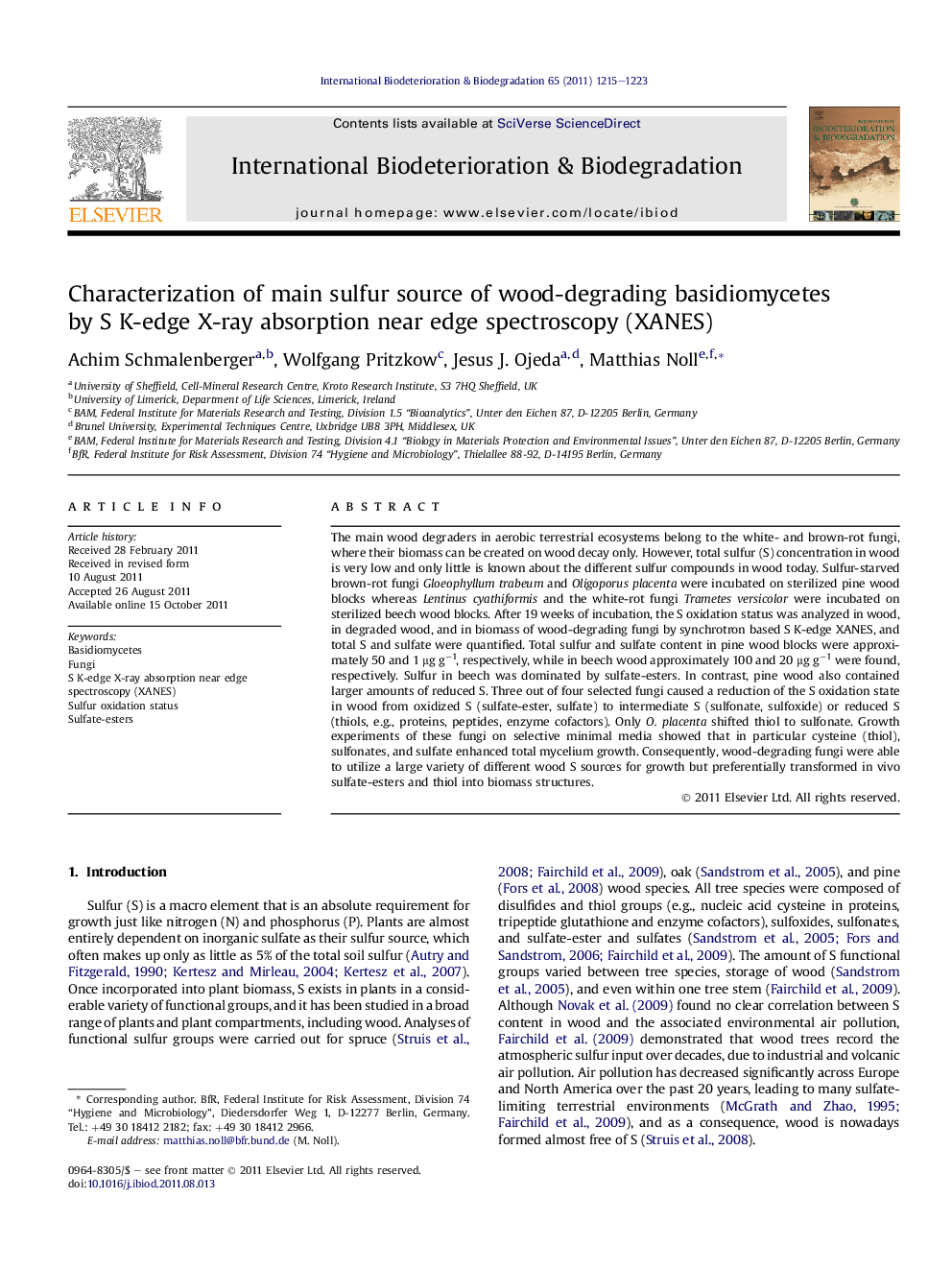| کد مقاله | کد نشریه | سال انتشار | مقاله انگلیسی | نسخه تمام متن |
|---|---|---|---|---|
| 4365290 | 1301750 | 2011 | 9 صفحه PDF | دانلود رایگان |

The main wood degraders in aerobic terrestrial ecosystems belong to the white- and brown-rot fungi, where their biomass can be created on wood decay only. However, total sulfur (S) concentration in wood is very low and only little is known about the different sulfur compounds in wood today. Sulfur-starved brown-rot fungi Gloeophyllum trabeum and Oligoporus placenta were incubated on sterilized pine wood blocks whereas Lentinus cyathiformis and the white-rot fungi Trametes versicolor were incubated on sterilized beech wood blocks. After 19 weeks of incubation, the S oxidation status was analyzed in wood, in degraded wood, and in biomass of wood-degrading fungi by synchrotron based S K-edge XANES, and total S and sulfate were quantified. Total sulfur and sulfate content in pine wood blocks were approximately 50 and 1 μg g−1, respectively, while in beech wood approximately 100 and 20 μg g−1 were found, respectively. Sulfur in beech was dominated by sulfate-esters. In contrast, pine wood also contained larger amounts of reduced S. Three out of four selected fungi caused a reduction of the S oxidation state in wood from oxidized S (sulfate-ester, sulfate) to intermediate S (sulfonate, sulfoxide) or reduced S (thiols, e.g., proteins, peptides, enzyme cofactors). Only O. placenta shifted thiol to sulfonate. Growth experiments of these fungi on selective minimal media showed that in particular cysteine (thiol), sulfonates, and sulfate enhanced total mycelium growth. Consequently, wood-degrading fungi were able to utilize a large variety of different wood S sources for growth but preferentially transformed in vivo sulfate-esters and thiol into biomass structures.
► Sulfur utilization of brown- and white-rot fungi were investigated.
► Changes in the S oxidation state were examined by S K-edge XANES.
► Three out of four fungi caused a reduction of the S oxidation state in wood.
► Wood-degrading fungi transformed wood S sources in vivo to sulfate-esters and thiol.
Journal: International Biodeterioration & Biodegradation - Volume 65, Issue 8, December 2011, Pages 1215–1223